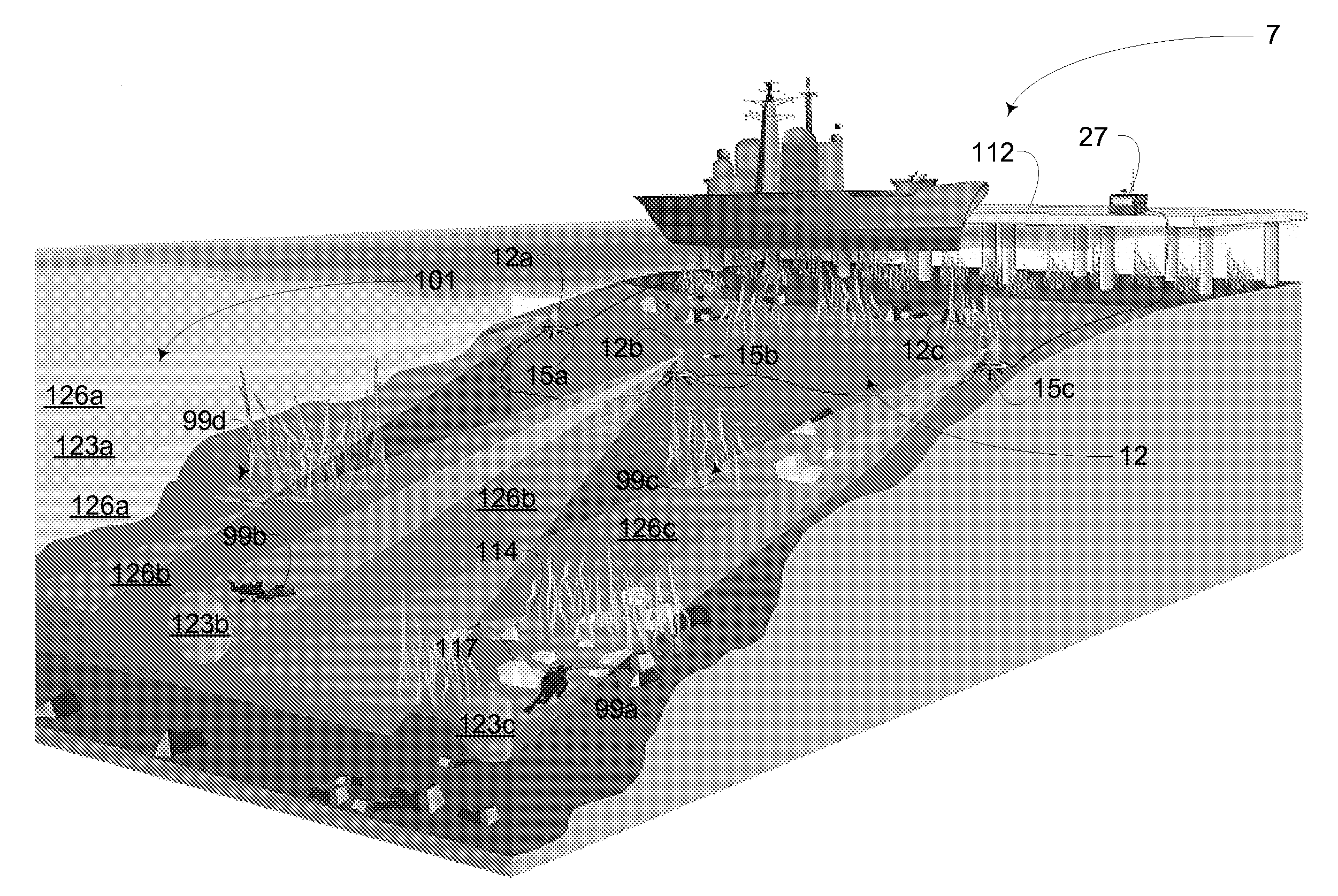Networked sonar observation of selected seabed environments
a networked, seabed environment technology, applied in the field of sonar, can solve the problems of lack of coordination, inability to easily count in such confined waterways, and lack of visual counting
- Summary
- Abstract
- Description
- Claims
- Application Information
AI Technical Summary
Benefits of technology
Problems solved by technology
Method used
Image
Examples
Embodiment Construction
[0020]By way of overview, a sonar transducer network for observing a seabed includes a controller. A first transducer assembly includes a first acoustic transducer to convert a first ping to a first electrical signal; and a first transducer processor to receive a first electrical signal from the first acoustic transducer to generate the first transducer data. At least one second transducer assembly is spaced apart from the first transducer assembly. The second transducer assembly includes a second acoustic transducer to convert a second ping to a second electrical signal. The second transducer processor receives the second electrical signal from the second acoustical transducer to generate second transducer data. A network bus communicates first transducer data and second transducer data with the controller.
Networked Transducer Assemblies with Two-Axis Mounts
[0021]FIG. 1 illustrates a non-limiting example of a transducer assembly 10 including a transducer electronics subassembly 12....
PUM
 Login to View More
Login to View More Abstract
Description
Claims
Application Information
 Login to View More
Login to View More - R&D
- Intellectual Property
- Life Sciences
- Materials
- Tech Scout
- Unparalleled Data Quality
- Higher Quality Content
- 60% Fewer Hallucinations
Browse by: Latest US Patents, China's latest patents, Technical Efficacy Thesaurus, Application Domain, Technology Topic, Popular Technical Reports.
© 2025 PatSnap. All rights reserved.Legal|Privacy policy|Modern Slavery Act Transparency Statement|Sitemap|About US| Contact US: help@patsnap.com



